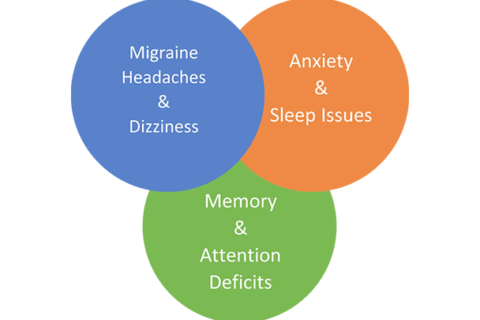
Migraine Anxiety Related Dizziness (MARD)
Published on: February 19, 2013
Described by Furman et al (2005) we see this condition in an increasing number of non-labyrinthine cases of internalized dizziness with heightened motion and visual disturbance. In fact, at AIB, in just the past 10 days we have seen a 49 year old female speech pathologist and a 33 year old female computer programmer. All radiographic studies and medical-lab work is negative. There is no precedent history of a vestibular event (vertigo lasting 30 minutes to hours) or any auditory symptoms. Oftentimes, they had been sent for vestibular rehabilitation (VRT), but after several weeks when no progress is made they are sent to us for evaluation and consultation. This is also the danger of referring to therapy without a comprehensive evaluation. There are no focal neurological symptoms and no associated headache. Yet, it is seen exclusively in pre-menopausal females with life-long history of migraine. The patient reports that they have increasing levels of stress at home or at work, sometimes both. The individual is usually well-educated with a type A personality. It is common for them to have a history of anxiety and panic attacks, histrionic, and obsessive compulsive personality traits. Their vestibular tests are almost always completely unremarkable and well within normal parameters. The exception is the possible caloric weakness, which is however not uncommon in migraine patients and may have no relationship to their current symptoms. That is why tests of function i.e. head thrust, dynamic visual acuity, or CTSIB which have high-sensitivity to non-compensated vestibulopathy should be included in the examination. If they do have a non compensated vestibular condition secondary to a vestibular event, then by all means VRT is the right way to proceed.
Good news, with proper counseling, medical, pharmacological and behavioral management these patients do improve. The goal is to be sure the patient has a thorough medical examination, a vestibular examination with tests of function and avoid VRT without a diagnosis. The best way to help this group of patients is to get them on the right continuum of care and not to assume that VRT will address the symptoms.